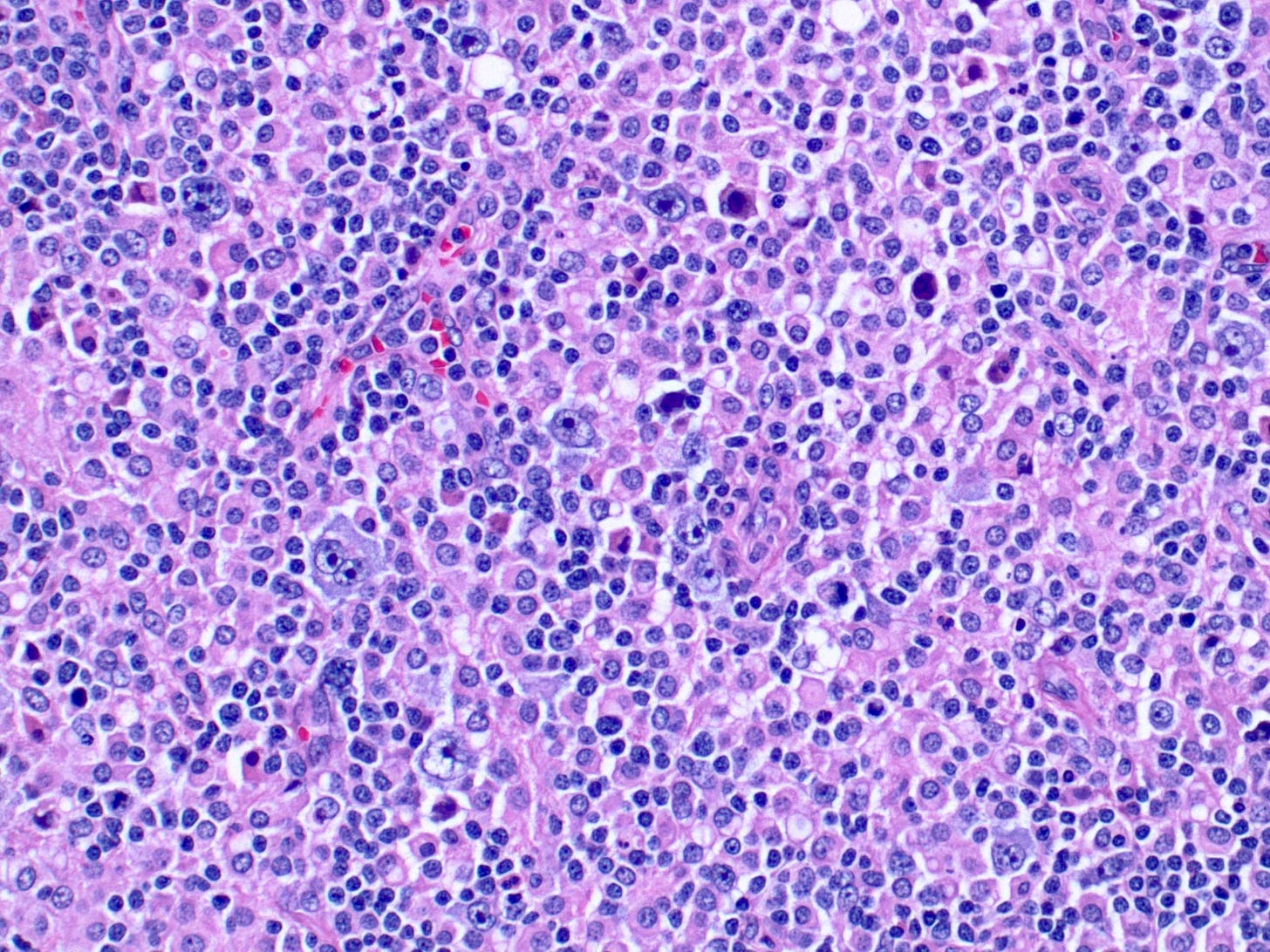Diffuse large B cell lymphoma, an overview
3 May 2023

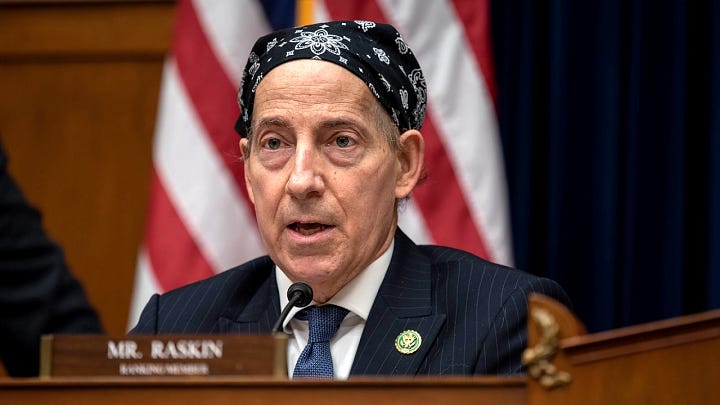
U.S. Rep. Jamie Raskin, before and after chemotherapy.
Last December, U.S. Representative Jamie Raskin announced his diagnosis of diffuse large B cell lymphoma (DLBCL). He recently indicated that he had finished chemotherapy and is in remission.
Lymphomas are a cancer of lymphocytes, a type of white blood cell. There are an extensive number of lymphomas, generally divided into Hodgkin and non-Hodgkin subtypes.
Diffuse large B cell lymphoma is a group of related malignancies with these features:
It is a common subtype of Non-Hodgkin lymphoma.
There are now 2 competing classification systems for lymphomas which list several different types of diffuse large B cell lymphoma (DLBCL) based on their site in the body, molecular alterations, microscopic features and association with chronic inflammation or viruses. DLBCL, NOS (not otherwise specified) means the subtype without any of these specific features.
Diffuse large B cell lymphoma is a “high grade” or aggressive lymphoma, based on its clinical behavior and the microscopic appearance of the cancer cells.
Diffuse large B cell lymphoma may arise de novo (i.e. without any prior condition) or from the transformation of other low grade lymphomas such as follicular lymphoma, marginal zone lymphoma, chronic lymphocytic leukemia / small lymphocytic lymphoma or nodular lymphocyte predominant Hodgkin lymphoma.
Treatment is typically with R-CHOP chemotherapy (rituximab, cyclophosphamide, doxorubicin, vincristine and prednisone) or other rituximab based regimens, but can vary based on other factors.
Widespread involvement of the kidney by diffuse large B cell lymphoma, within the black lines. Compare to a normal kidney.


The above microscopic images of diffuse large B cell lymphoma show a lymph node with:
diffuse replacement (effacement) of its normal structure by
large atypical malignant lymphoma cells which are bigger and have lighter cytoplasm than the smaller cells, which are normal lymphocytes.
The image on the right shows malignant cells that are pleomorphic (i.e. they differ from each other), a feature of high grade cancers.
The large atypical cells were determined to be B lymphocytes (B cells) based on an antibody to B cells that is applied to the slide (also called immunohistochemical staining) which gives a brown color to the lymphoma cell membranes.
This is a related lymphoma called high grade B cell lymphoma with MYC and BCL2 translocations, which has specific mutations (MYC and BCL2) that are associated with more aggressive behavior.
This diffuse large B cell lymphoma showed evidence of EBV (Epstein-Barr virus) and has cells resembling Hodgkin lymphoma.
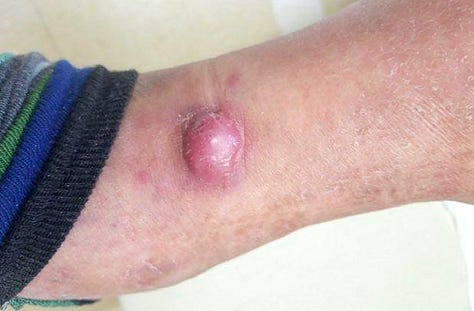
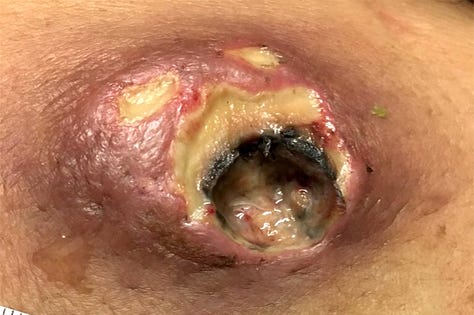
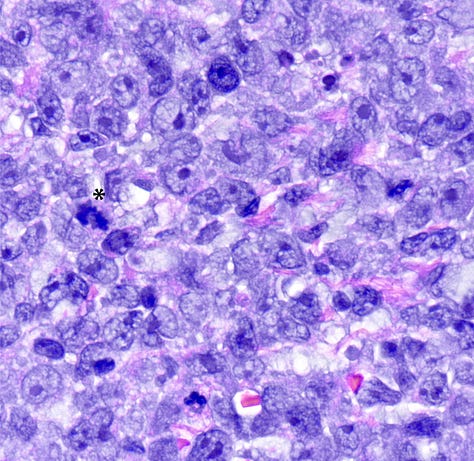
These diffuse large B cell lymphomas occurred in the skin of the leg.
This diffuse large B cell lymphoma is associated with HHV8, an AIDS related virus.
There are a large number of characteristics that could be used to classify any cancer, including diffuse large B cell lymphoma. The challenge for physicians and scientists is to determine which characteristics are most useful to improve diagnosis and treatment. This changes over time, which is why there are frequent changes in classification systems.
End of discussion.
Index to Nat’s Substack articles
If you like these essays, please share them with others.
Follow me at Substack or LinkedIn or through my Curing Cancer Newsletter .
Follow our Curing Cancer Network on LinkedIn and Twitter. Twice a week we post interesting cancer related images of malignancies with diagnoses.
Latest versions of our cancer related documents:
Strategic plan to substantially reduce cancer deaths
American Code Against Cancer (how you can prevent cancer)
Email me at Nat@PathologyOutlines.com - unfortunately, I cannot provide medical advice.
I also publish Notes at https://substack.com/notes, and would love for you to join me there. Subscribers will automatically see my notes. Feel free to like, reply or share them around!





